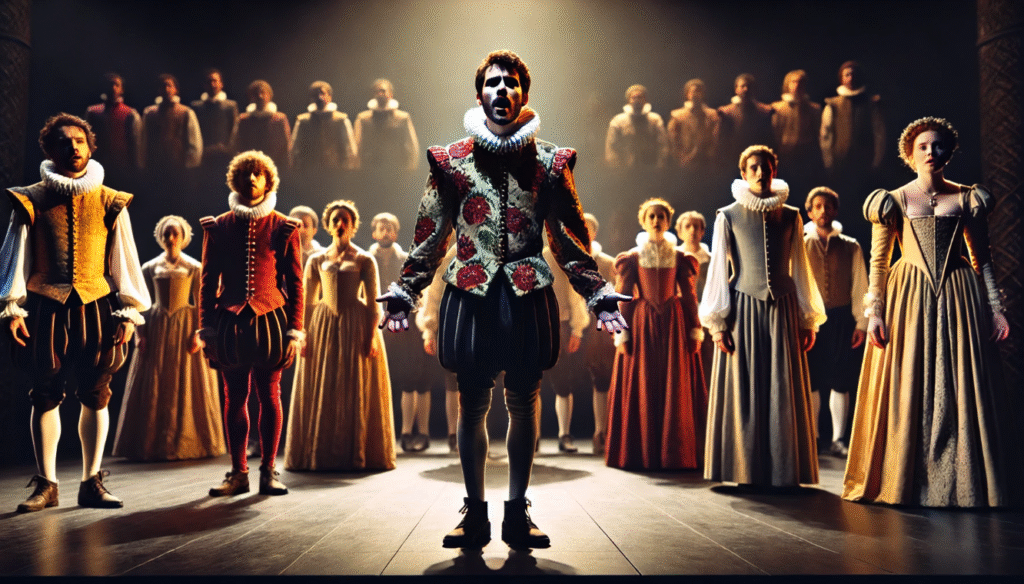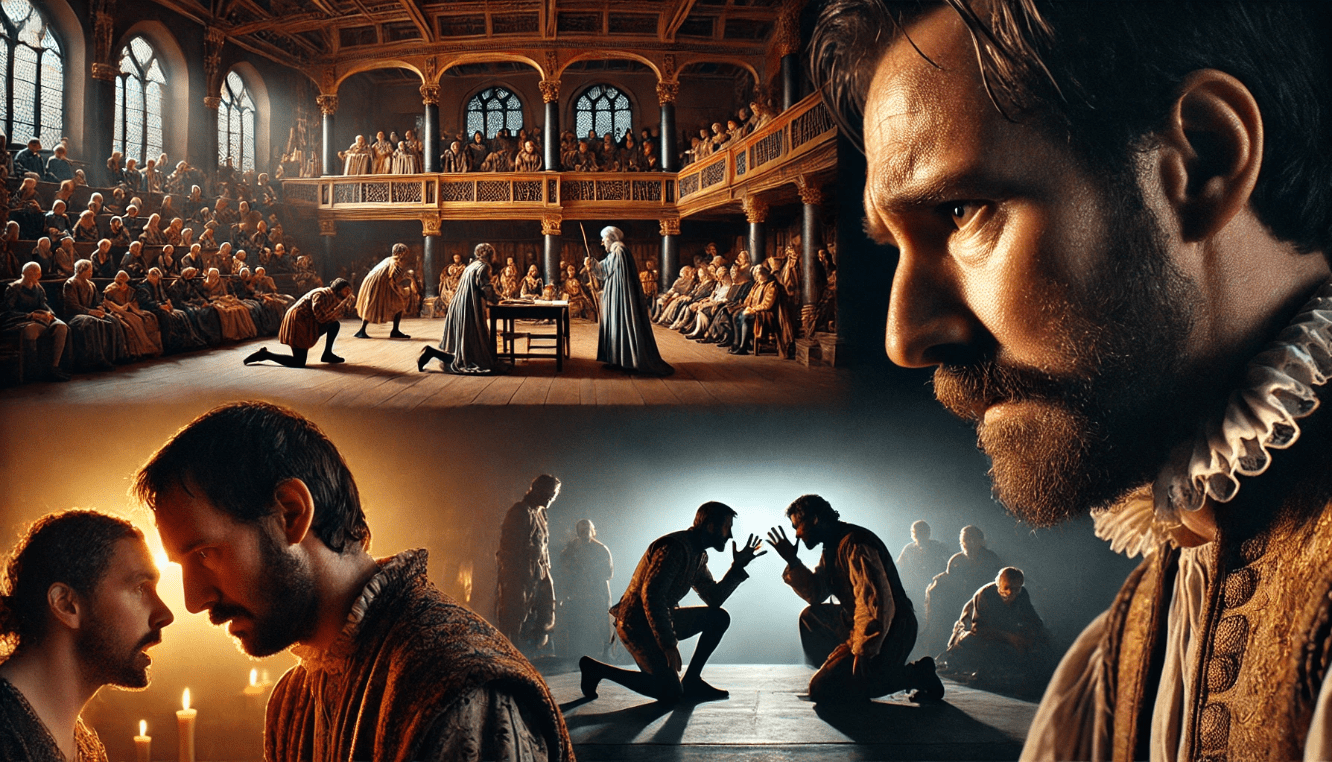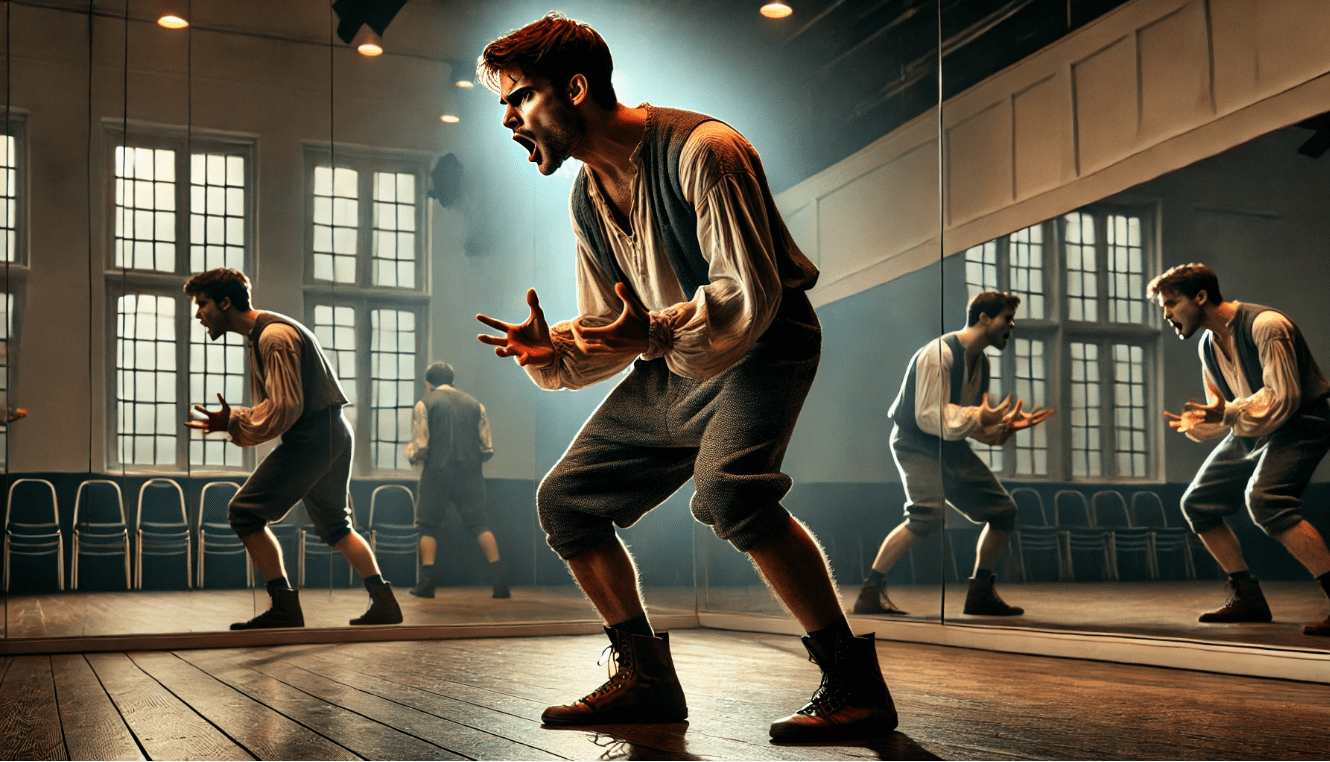
How Shakespeare’s Impact on the Training of Actors Revolutionized Modern Acting Techniques
Imagine stepping onto the stage, tasked with portraying a character that stretches your emotional range, demands your physicality, and challenges your voice. 🎭 Now, what if we told you that many of the techniques modern actors use today—whether in theatre, film, or TV—trace their roots back to one man: William Shakespeare? His works not only transformed storytelling but also reshaped how actors approach their craft.
Shakespeare’s impact on the training of actors has left a legacy that still influences acting techniques today. From voice control to emotional depth, his plays require actors to delve into complex characters and master the art of expression. In this article, we will explore how these time-tested techniques have revolutionized modern actor training and why every aspiring actor should incorporate them into their practice. Ready to unlock the secrets of acting greatness? Keep reading! 😊
Table of Contents
Toggle1. The Foundations of Shakespeare’s Acting Techniques
Shakespeare didn’t just write plays—he redefined acting itself. His works are filled with intricate characters, emotional depth, and powerful language, all of which have shaped the foundations of modern acting. But what exactly makes his approach so impactful for actors today? Let’s break it down. 😊

Theatrical Practices of Shakespeare’s Time
In the Elizabethan era, acting was all about connection. Actors were expected to deliver their lines with clarity, emotion, and precision, all while engaging with the audience. The Globe Theatre, where Shakespeare’s plays were performed, had no microphones, so actors had to rely heavily on projection and vocal power to be heard. This is why Shakespeare’s impact on voice training is still relevant today.
Key Features of Shakespearean Acting
- Voice Mastery
Shakespeare’s plays are written in iambic pentameter, a rhythmic pattern of stressed and unstressed syllables. This structure encourages actors to develop precise control over their voices, making every word resonate with emotion and clarity. Today, actors use this technique to develop strong vocal skills for both theatre and screen performances. - Emotional Depth Through Soliloquies
Shakespeare was a master of revealing a character’s inner thoughts. His soliloquies, like Hamlet’s famous “To be or not to be,” allow actors to explore and express deep emotions. These long speeches give actors the freedom to explore various emotions—anger, love, despair—in an incredibly detailed way. - Physicality and Gesture
Shakespeare’s plays often demanded a lot of physicality. Whether it’s the grandeur of a king or the subtlety of a lover, Shakespeare’s characters require actors to embody their roles through gesture and movement. This physicality allows the actor to connect with the character on a deeper level and portray the emotions and actions in a more tangible way. - Interaction with the Audience
The audience was always a part of Shakespearean performances, which is why actors were trained to engage with them directly. Shakespeare’s style of performance was dynamic—actors didn’t just speak to one another; they spoke to the crowd, making each performance a unique, interactive experience.
2. The Lasting Influence of Shakespeare on Modern Acting
Shakespeare’s influence on modern acting is undeniable, and his techniques continue to shape the way actors are trained today. From emotional depth to physicality, his approach laid the foundation for many of the acting techniques we see in both theatre and film. But how exactly has Shakespeare’s work transformed modern actor training? Let’s break it down. 🎭
1. Emotional Preparation Through Soliloquies

One of the biggest impacts of Shakespeare on modern acting is his use of soliloquies to explore a character’s inner thoughts. These long, introspective speeches allow actors to dive deep into the emotional landscape of a character. In modern acting techniques like method acting, actors often use soliloquies to prepare emotionally for a role, connecting with their character’s feelings on a profound level.
2. Mastery of Language and Speech
Shakespeare’s use of language was revolutionary, and his writing has influenced how actors approach speech. The rhythmic structure of iambic pentameter forces actors to pay attention to every word, building precision in their delivery. Modern acting techniques, such as those taught in classical training programs, still emphasize the importance of diction, projection, and clarity—all rooted in Shakespeare’s language.
3. Physicality and Presence
Shakespeare’s plays are often larger than life, and actors were expected to physically embody their characters. This required strong stage presence, clear gestures, and controlled movement. In modern acting, this emphasis on physicality translates into the use of body language to express emotions and actions.
4. Ensemble Work and Timing
Shakespeare’s plays were designed for an ensemble cast, with actors often working together to create harmony on stage. This collaborative spirit is a cornerstone of modern acting, where ensemble work and timing are critical. Whether in theatre or film, actors are trained to work together seamlessly to create the best possible performance.
5. Relevance Across Mediums: Stage to Screen
Shakespeare’s techniques didn’t just shape traditional theatre—his influence extends into modern film and television acting as well. Filmmakers often draw inspiration from his narrative techniques, character depth, and dialogue, using these elements to create compelling on-screen performances. Many actors also cite Shakespeare as a crucial part of their training, whether they perform on stage or in front of the camera.
3. Practical Applications: How Aspiring Actors Can Integrate Shakespeare’s Techniques

If you’re an aspiring actor looking to elevate your craft, you might be wondering how to bring Shakespeare’s timeless techniques into your training. Good news! You don’t need to be performing in a Shakespearean play to benefit from his methods. Whether you’re working on a modern role or preparing for a classic, integrating Shakespeare’s approach into your acting routine will help you develop stronger emotional depth, physicality, and vocal control. Here’s how you can do it! 🎭
1. Master Shakespeare’s Language for Better Diction and Voice Control
Shakespeare’s language may seem challenging at first, but it’s a fantastic tool for improving your vocal skills. The rhythm of iambic pentameter helps actors control their breathing and projection while ensuring clarity in speech.
2. Use Soliloquies to Explore Emotional Depth
Shakespeare’s soliloquies are powerful emotional tools. They give actors the space to dig deep into their characters’ thoughts and feelings. Whether you’re performing Hamlet or Macbeth, the soliloquy format teaches you to express complex emotions and inner turmoil.
3. Develop Your Physical Presence
Shakespeare’s characters often need to be larger than life, and physicality plays a huge role in portraying them convincingly. His characters express emotions not only through words but through body language—facial expressions, hand gestures, and posture.
4. Practice Ensemble Work with Shakespeare’s Plays
While Shakespeare is often associated with strong individual performances, his plays also emphasize the importance of ensemble work. Working in harmony with other actors allows for greater timing, rhythm, and emotional resonance.
5. Adapt Shakespeare’s Techniques for Modern Roles
Shakespeare’s influence is not confined to the stage. His techniques are just as relevant for TV and film actors. Use his methods of character exploration, emotional depth, and vocal control to bring modern roles to life.
6. Incorporate Shakespeare’s Character Work into Scene Study
One of the best ways to integrate Shakespeare’s techniques into your training is through scene study. Choose a character from one of his plays and explore how they evolve throughout the scene—emotionally, physically, and mentally.
4. How Shakespeare’s Impact Transcends Theatre: Influence on Film and TV Acting

Shakespeare’s influence doesn’t stop at the stage. His impact on modern acting techniques has transcended theatre and found its way into the world of film and television. From the portrayal of complex emotions to the delivery of memorable dialogue, Shakespeare’s techniques are just as relevant in front of the camera as they are on stage. Let’s explore how his methods continue to shape acting on the big and small screens today. 🎬
1. Emotional Depth: From Stage to Screen
Shakespeare’s characters are known for their emotional complexity. Whether it’s Hamlet’s indecision or Lady Macbeth’s guilt, Shakespeare encouraged actors to explore the full spectrum of human emotion. This focus on emotional depth has had a lasting effect on film and TV acting, where characters are expected to convey subtle emotions with authenticity.
2. Mastering Dialogue Delivery
Shakespeare’s rich and intricate dialogue challenges actors to master the art of speech. His language is often poetic, with layered meanings and rhythms that can be difficult to execute. This focus on articulate and precise speech has influenced how actors approach dialogue delivery in film and TV.
3. Physicality and Presence on Screen
In Shakespeare’s time, actors had to project their voices and use physicality to capture the attention of a large audience. Today, film actors have the benefit of close-ups and subtle movements, but the emphasis on physicality remains. Shakespeare’s emphasis on using gestures and body language to express emotions still applies in film and TV, where the actor’s presence and physicality are key to making a character feel real.
4. Shakespearean Influence in Film Adaptations
Many film and TV adaptations of Shakespeare’s works have brought his influence into the mainstream. From Kenneth Branagh’s Hamlet to Baz Luhrmann’s modernized Romeo + Juliet, directors have embraced the timelessness of Shakespeare’s writing and adapted it for modern audiences. These adaptations often retain the depth and complexity of Shakespeare’s characters, ensuring that his influence remains strong across different media.
5. The Universality of Shakespeare’s Themes
Shakespeare’s themes—love, betrayal, ambition, and tragedy—are universal and timeless. These themes continue to resonate in modern storytelling, influencing screenwriters, directors, and actors. Whether in a romantic drama or a political thriller, Shakespeare’s ability to tackle universal human experiences informs many of the powerful stories we see on screen today.
5. Overcoming Challenges: The Complexity of Shakespeare’s Influence
While Shakespeare’s influence on acting is vast and transformative, it doesn’t come without its challenges. From mastering his intricate language to connecting with his complex characters, many modern actors struggle with various aspects of Shakespeare’s techniques. However, these challenges can be overcome with the right approach and mindset. Let’s take a look at some common obstacles and how you can tackle them. 🎭

1. Understanding Shakespeare’s Language
One of the biggest hurdles actors face when performing Shakespeare is the language itself. The old English used in his plays can seem confusing, filled with unfamiliar phrases and archaic grammar. For many, this barrier makes his works seem inaccessible.
Solution:
Start by breaking down the text. Read it out loud and underline any unfamiliar words or phrases. Use modern translations or annotations to help you understand the meaning. As you rehearse, focus on the rhythm and flow of the language, which can help you speak it more naturally.
2. Bringing Shakespeare’s Emotional Depth to Life
Shakespeare’s characters are emotionally complex, and bringing that depth to life can be daunting. Whether it’s Hamlet’s indecision or Macbeth’s ambition, these characters require actors to dig deep into their own emotional reserves. Many actors feel overwhelmed by the responsibility of portraying such layered emotions.
Solution:
The key is to connect the character’s emotions to your own experiences. Shakespeare’s characters often struggle with universal human dilemmas—love, power, betrayal. Reflect on your personal experiences and try to align them with the character’s journey.
3. Adapting Shakespeare to Modern Audiences
Shakespeare’s works were originally written for a very different time and audience, and sometimes actors struggle to make them feel relevant today. Modern theatre and film have evolved, with different pacing and performance styles, making it hard to bridge the gap between Shakespeare’s world and today’s.
Solution:
While you must respect Shakespeare’s intent, don’t be afraid to bring your personal interpretation into the performance. Think about how the themes of the play—whether it’s ambition, love, or tragedy—resonate with today’s world. Use contemporary acting techniques to help make these themes more relatable to a modern audience.
4. Overcoming the Pressure of Perfection
Shakespeare is often considered the pinnacle of dramatic writing, and there’s pressure to perform his works flawlessly. This pressure can create anxiety, especially when performing in front of an audience who may be familiar with the material.
Solution:
Remember, Shakespeare’s work is meant to be performed, not just read. Mistakes can happen, and that’s okay! What matters is how you recover and stay true to the character and the emotion behind the lines. Embrace the journey of discovery and trust that the audience is there to enjoy the experience, not judge perfection.
6. Why Shakespeare’s Techniques Are Still Essential for Actors Today

Even in today’s rapidly evolving entertainment industry, Shakespeare’s techniques remain a cornerstone of actor training. Whether you’re on stage or in front of the camera, his methods help actors connect with characters, enhance their emotional depth, and refine their craft. So why are these techniques still so relevant? Let’s break it down. 🎭
1. Shakespeare Teaches Emotional Depth
Shakespeare’s characters are not one-dimensional; they are complex, multifaceted, and full of contradictions. His works challenge actors to explore and express a wide range of emotions—from love and jealousy to ambition and guilt. This emotional depth remains crucial for actors today, as modern roles often require the same nuanced portrayal.
2. Mastering Language and Speech
Shakespeare’s mastery of language allows actors to work on their diction, projection, and vocal range. The unique structure of his verse—especially iambic pentameter—pushes actors to control their breath and timing, enhancing vocal skills that are valuable for any actor, whether on stage or in film.
3. Enhancing Physicality and Stage Presence
In Shakespeare’s time, actors had to project their voices and use their bodies to communicate with an audience. Today, the emphasis on physicality remains. Whether it’s subtle body language or grand gestures, Shakespeare’s characters demand physicality that helps actors connect with the audience and convey emotions without relying solely on words.
4. Shakespeare’s Techniques Are Timeless
Shakespeare’s themes—such as love, betrayal, power, and mortality—are universal and continue to resonate with audiences across cultures and time periods. The challenges his characters face, like internal conflict and moral dilemmas, are as relevant today as they were 400 years ago. Understanding these timeless themes equips modern actors with the tools to connect with audiences on a deep, emotional level.
5. Versatility Across Genres
Shakespeare’s works span tragedy, comedy, history, and romance, allowing actors to develop a wide range of skills. His techniques help actors develop versatility, allowing them to seamlessly transition between genres, whether in theatre, TV, or film. This adaptability is crucial in today’s competitive acting world.
Shakespeare’s impact on the training of actors is not just a historical footnote—it’s a living, breathing force that continues to shape modern acting. His techniques, from mastering language and emotional depth to enhancing physicality and presence, provide a solid foundation for actors of all backgrounds and experience levels. Whether you’re performing on stage, in film, or for television, Shakespeare’s influence remains as relevant today as it was centuries ago.
By embracing his timeless methods, you’ll not only enrich your craft but also gain a deeper connection to your characters and the stories you bring to life. So, whether you’re preparing for a Shakespearean play or a modern role, remember that the lessons from his work are powerful tools that can help you unlock your full potential as an actor.
Frequently Asked Questions (FAQs)
1. Why is Shakespeare still important for actors today?
Shakespeare remains a foundational figure in actor training because his works offer rich emotional depth, complex characters, and language techniques that enhance voice, emotional range, and physical presence. His techniques help actors master speech clarity, emotional expression, and stage presence, all of which are crucial in modern acting.
2. How can I improve my acting using Shakespeare’s techniques?
To improve your acting with Shakespeare’s techniques, practice his soliloquies to deepen emotional expression, focus on mastering iambic pentameter for better speech clarity, and incorporate physical gestures to embody your character fully. These practices build vocal control, emotional depth, and a strong stage presence.
3. What are the main challenges of acting Shakespeare?
The main challenges of acting Shakespeare include understanding the complex language and archaic expressions, connecting emotionally with characters that lived in a different era, and making the performances feel relevant to modern audiences. Overcoming these challenges requires practice, understanding the emotional core of the characters, and experimenting with modern interpretations.
4. How does Shakespeare influence modern film acting?
Shakespeare’s emotional depth, powerful dialogue, and physicality have heavily influenced modern film acting. Many actors draw on his techniques to convey complex emotions, deliver lines with precision, and maintain strong physical presence, even in intimate film scenes, ensuring characters feel authentic and compelling.
5. Can Shakespeare’s techniques help me in TV acting?
Yes, Shakespeare’s techniques are very beneficial for TV acting. His emphasis on vocal control, emotional depth, and physical expression can help actors bring more authenticity and range to their performances, ensuring they connect with the audience, even on smaller screens where subtler performances are often required.
6. Do I need to perform Shakespeare to benefit from his acting methods?
No, you don’t need to perform Shakespeare to benefit from his techniques. His methods—such as mastering language, emotional preparation, and physicality—apply to all types of acting. Whether you’re preparing for a modern play, film, or TV show, incorporating Shakespearean principles will enhance your acting skills.
7. How does Shakespeare help in character development?
Shakespeare’s characters are multi-dimensional, allowing actors to explore a wide range of emotions, motives, and internal conflicts. By studying these characters, actors learn to develop richer, more layered performances, understanding that even the simplest roles can have complex motivations and emotional depth.
8. What makes Shakespeare’s language challenging for modern actors?
Shakespeare’s language can be challenging due to its use of old English, unfamiliar phrasing, and poetic structure. However, understanding the rhythm (iambic pentameter) and breaking down complex passages into simpler parts can help actors connect with the language and bring out its full emotional potential.
